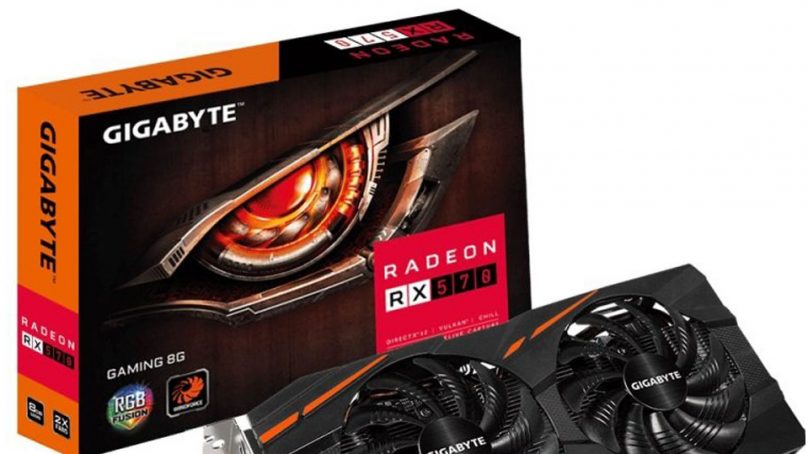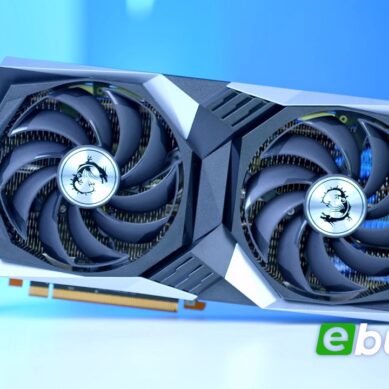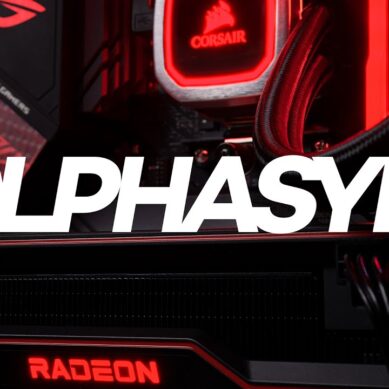
Given that Nvidia has recently taken a considerable risk by launching a set of expensive cards targeted squarely at enthusiasts with deep pockets, many gamers will look to its closest rivals, AMD, in search of more bang for their buck at the bottom of the market. The Radeon RX 570 is unashamedly a mere minor improvement over its predecessor, the RX 470, which launched just a year beforehand. The same Ellesmere GPU sits at the heart of the card, and the specs are identical; as before, you’ll get 2048 Shader Units and 32 ROPs. This card was created with one purpose in mind – to provide Nvidia’s 1060 series, which dominates the middle of the market, with much-needed competition. AMD doesn’t make its own RX 570s, and so all the cards out there are the work of third-party manufacturers, so you can expect some variety when it comes to performance, heat management and price. With that proviso aside, let’s examine the card and how it performs.
Performance
AMD markets this member of the Radeon range as a 1080p card – but there’s also an 8GB version to consider. With the extra space to draw upon, your Radeon might well be able to keep up with larger displays – up to 4K and beyond. However, if you were to decide to go for an 8GB card, it might make more sense to opt for a more powerful one, especially as the 4GB on the smaller card offers plenty for gamers at this price. Of course, you can expect different levels of performance from different games. Something like Assassin’s Creed: Origins, for example, favours Nvidia cards like the 1060 (the RX 570’s closest rival, pricewise). On the other hand, Dirt 4 swings in the other direction. As ever, it’s worth taking a glance at the benchmarks for the games you most enjoy playing before committing to a decision.
FreeSync
FreeSync is AMD’s answer to Nvidia’s G-Sync. Both technologies are versions of the same thing: adaptive sync. This synchronises the refresh rate of your monitor to the frame rate of the game, meaning that new frames arrive in total harmony. There’s no more tearing through the middle of frames, and no more of the buffering lag associated with traditional vertical sync. There is a downside that’s important to consider, however; you’ll need a compatible monitor. Moreover, monitors of this sort aren’t cross-compatible between Nvidia and AMD cards, so if you decide to invest in a FreeSync monitor, you’ll be agreeing to use AMD cards for as long as you have it. Monitors of this sort command a hefty premium many gamers don’t consider worthwhile. If you’re comfortable with the downsides, adaptive sync provides a buttery-smooth experience of the sort that PC gamers aspire to. If you never want to see another frame torn in half across the middle again, it’s an easy decision.
Power and heat
AMD hasn’t tried to reinvent the wheel with the RX570. By providing more voltage, they’re managed to eek out a little more performance. This naturally comes at the expense of energy efficiency, and heat management. The downside here comes in the power consumption when you’re pushing beyond stock. Most of the third-party cards will come with a pair of chunky power connectors at the top, both of which will be needed to cope. The Sapphire version comes overclocked as standard, and ships with an eight-pin and six-pin socket for additional power cables. Next to the relatively lightweight 1060 and the 1050Ti, the power demands of the RX 570 look a more difficult to swallow. If you’re already using a suitably powerful PSU, however, this isn’t a problem. Manufacturers have, by and large, dealt with the heat issue by bolting on a generous heat sink and cranking the fans. Consequently, you should expect an RX 570 to get noisy when the going gets tough – expect noise levels in the mid-40s dB(A).
Price
Cards in this family vary considerably in cost and so it’s worth paying special attention before making a purchase. You can, for example, expect to pay more than £100 more for the aforementioned Sapphire card than you would for a similarly-specced MSI.
The RX 570 therefore occupies a strange position in the graphics-card market. If you’re willing to compromise on visuals then you’ll have put together a 1080p system based around the slightly-cheaper 1050Ti. The same applies to this card when it comes to 1440p gaming – opt for the 8GB and you’ll have a generous-enough frame buffer to cope, but you’ll need to compromise on a few settings in order to enjoy a smooth experience. On the other hand, if you’d prefer to keep things at 1080p, the 4GB version of this card remains a fantastic way to do it, as it commands a hugely reduced price tag compared to its slightly-more-powerful cousin.
This card is geared towards a very specific market: those who are looking to game at 1080p, but who’d like to do so without turning down any of those precious settings. AMD has done its homework and banked that a sizeable portion of gamers who are still rocking an older card will find the newer offering compelling. In the few games where the 1060 3GB beat the RX 470, AMD has managed to close the gap. We should consider that in more than a handful of games, the extra GB will make the difference between a crash and smooth gameplay, the upgrade becomes all the more compelling.
For a while, it’ll be a straight shootout between the various versions of the RX 570 and 1060 – and the lines between them are very blurry indeed. For this reason, we’d recommend coming up with a budget and sticking to it. If you’re using an RX 470, then the marginal improvement offered by the newer card might not be terribly persuasive – but if you haven’t made a graphical upgrade in a while, this is a compelling way to do it.






